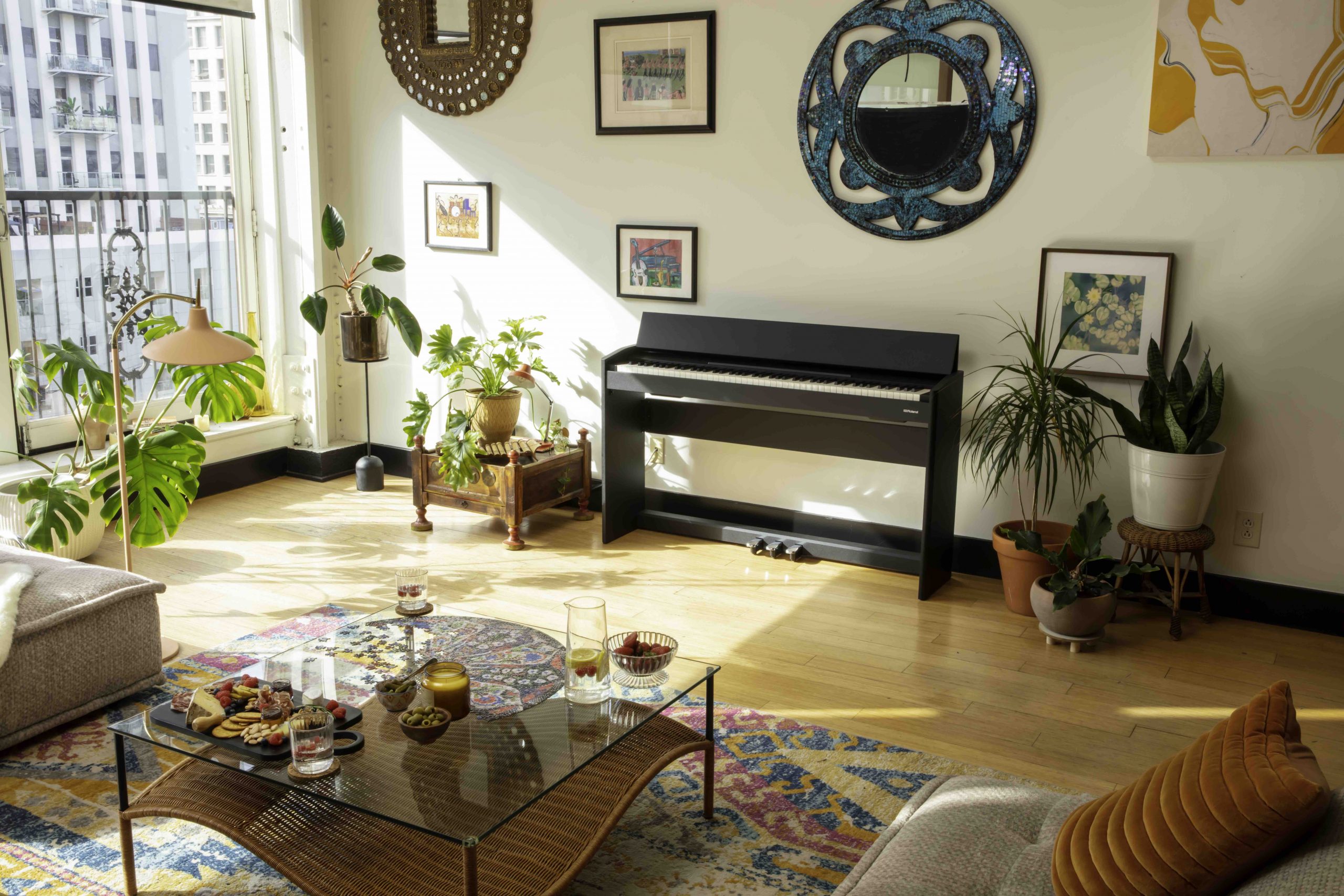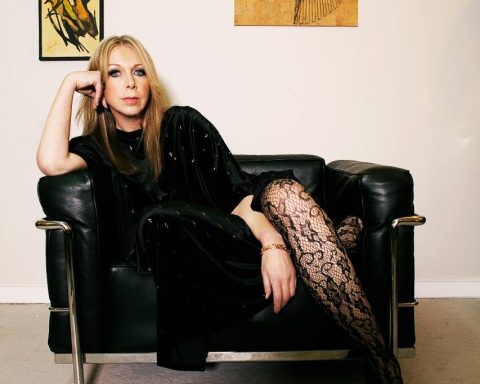Our enjoyment of music creation and practice is inherently linked to our surroundings. This is especially the case with the piano, a beautiful instrument that can make us feel instantly comfortable in a space. When purchasing a piano, there are many choices to make in terms of sound and feel. However, it’s also important to consider how the instrument interacts with your environment. There’s a world of possibilities to make your home piano area a welcoming spot you look forward to visiting.
Know Your Needs
It comes down to choosing the right piano for your musical needs and your home’s vibe. Start with a checklist of features that are the most important to you. Here are some starter questions:
- Are you looking for an acoustic or digital piano?
- How heavy or sensitive do you want the keys to be?
- Is owning a portable piano a priority for you?
- How far can you stretch your budget?
Before diving into placement and decoration, let’s break down some fundamental reasons why a digital piano can be a wise choice.
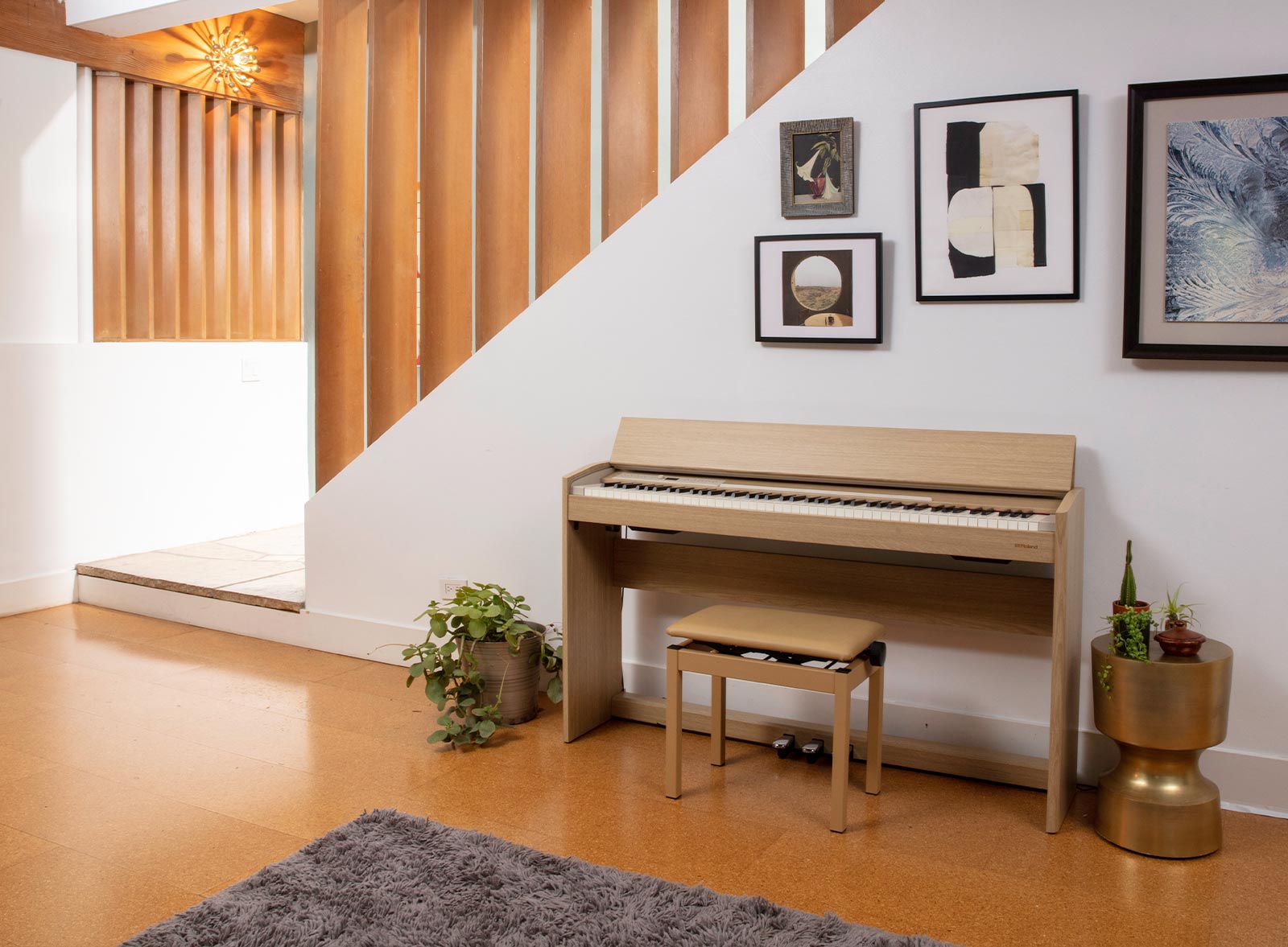
Digital Piano Basics
Digital pianos are much more affordable than their acoustic counterparts. In fact, for the price of an average acoustic model, you can purchase an exceptional digital piano. Lightweight and sometimes even portable, weather conditions don’t faze digital pianos. In marked contrast, acoustic pianos require special care. Even mild changes in humidity and temperature will affect the way they sound. Relocating them without the assistance of professional piano movers is inadvisable. Simply put, acoustic pianos are more high-maintenance.
There’s another significant reason why digital pianos are so popular today. You won’t ever have to worry about disturbing your neighbors while practicing. Just turn the speakers’ volume down or plug headphones into your piano. It’s that easy.
"There's the perfect piano for every need, purpose, and budget. You can achieve an immersive dream sound while also taking advantage of all the other benefits owning a digital model provides."
Form Meets Function
If you’re a composer or producer, you’ll find that owning a digital piano is a game changer. Sure, a standard MIDI keyboard works well enough. But the realistic feel digital pianos offer can be a massive upgrade that continues to inspire the player.
In short, there’s the perfect piano for every need, purpose, and budget. Many acoustic enthusiasts love the unique sound of a grand piano. Still, that doesn’t mean more accessible and practical digital pianos fall short. You can achieve an immersive dream sound while also taking advantage of all the other benefits owning a digital model provides.
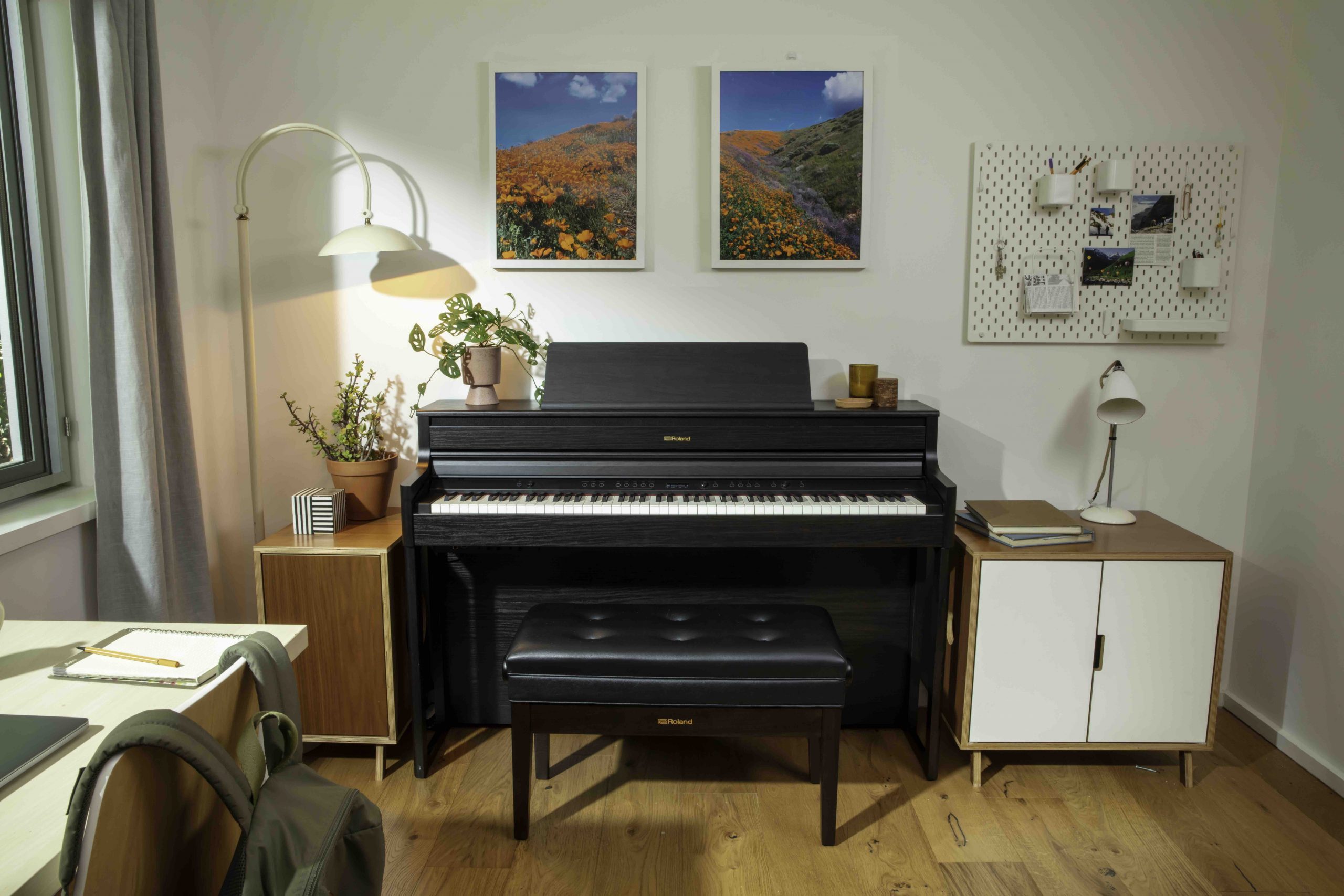
Making a Visual Statement
Digital pianos’ design aesthetic possibilities are endless. And with a bit of time and effort, you can probably find exactly what you want. That said, the search can get overwhelming. To speed up the process, pay attention to your surroundings and ask yourself some questions.
- How much space do you have to work within your home?
- Would you like your new piano to match the finish of your furniture?
- Do you want to subtly blend it with your wall color for a more muted look?
"A grand piano in the middle of your living room makes a classic and bold statement. An upright piano can fill a vacant spot in the hallway or foyer."
Place your piano front and center to entertain your guests or tuck it away in your bedroom for private practice. A grand piano that stands alone in the middle of your living room, like the GP609, makes a classic and bold statement. Roland’s mini grand, GP607, is the perfect compromise between grandeur and minimalism.
On the other hand, upright models offer a much more comprehensive range of sizes and styles. An upright piano can also be a functional device to fill a vacant spot in the hallway or foyer.
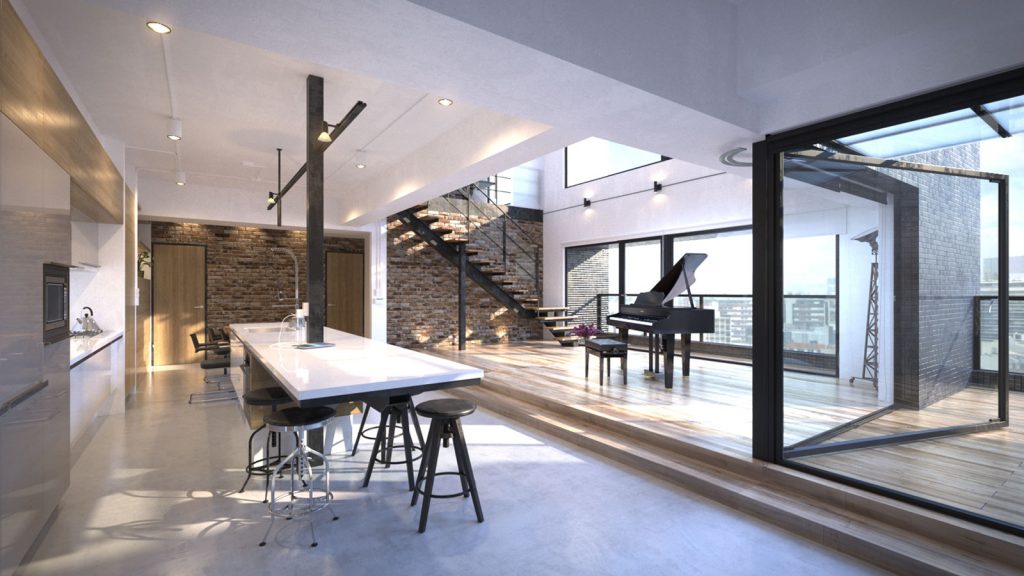
A Sound Question
In addition, it’s also a good idea to base this decision on acoustics. If you enjoy playing the piano at full volume, you might want to refrain from positioning it right by a wall you share with your neighbors.
Another factor to keep in mind is the size of the room. The piano may sound too boxy or dead if the room is too small. Even though you can control the amount of reverb in a Roland digital piano, you’ll still have to consider how the sound resonates in your space.
"An upright piano in black, like the LX708, can act as an accent piece in your decor. But a more compact model from the KIYOLA line may be the delicate addition a small apartment demands."
A Plethora of Choices
Choosing a room for your piano is a significant first step. However, getting out the measuring tape and writing down the numbers is essential. Some upright pianos are wider than others, but the most significant differences in size are depth and height. In a spacious area, a premium upright piano in black, like the LX708, can act as an accent piece in your decor. But a more compact model from Roland’s KIYOLA line may be the delicate addition a small apartment demands.
The KIYOLA KF-10 is a dream come true for artisan furniture lovers and feng shui practitioners alike. Created with Japanese designer Karimoku, all Kiyola pianos come with natural wood cabinets. The Walnut and Mocha Brown shades are great for homes that lean into the brown color spectrum. But with lighter finishes, such as Pure Oak or Sheer White, you can make the room appear larger.
If you love the look of the KIYOLA line but want a more affordable piano, Roland’s F701 is the one for you. A popular model for good reason, the F701 piano features a sleek, modern design that supports a minimal aesthetic. And for those who want the traditional presence of an upright without the height, the RP107 is a no-brainer.
Enhancing the Space
Have your eye on a few different models? Great. Now comes the fun part: decorating. Start by putting together a mood board and dividing accessories into two categories: necessities and extras.
Necessities include a bench, sheet music lighting, and storage units for piano books. Objects that fall into the extras category range from plants to wall decals. Sticking with the bench your piano comes with makes sense. But paying a little extra for one with storage space is not a bad idea either. And if you frequently play with a partner, a duet bench will suit your needs better.
Thanks to modern technology, many pianists utilize tablets to store musical notation. But staring at a screen for extended periods can create eye fatigue. Why not keep a few songbooks in a chic magazine stand by your piano? Get a clip light while you’re at it, and your eyes will thank you.
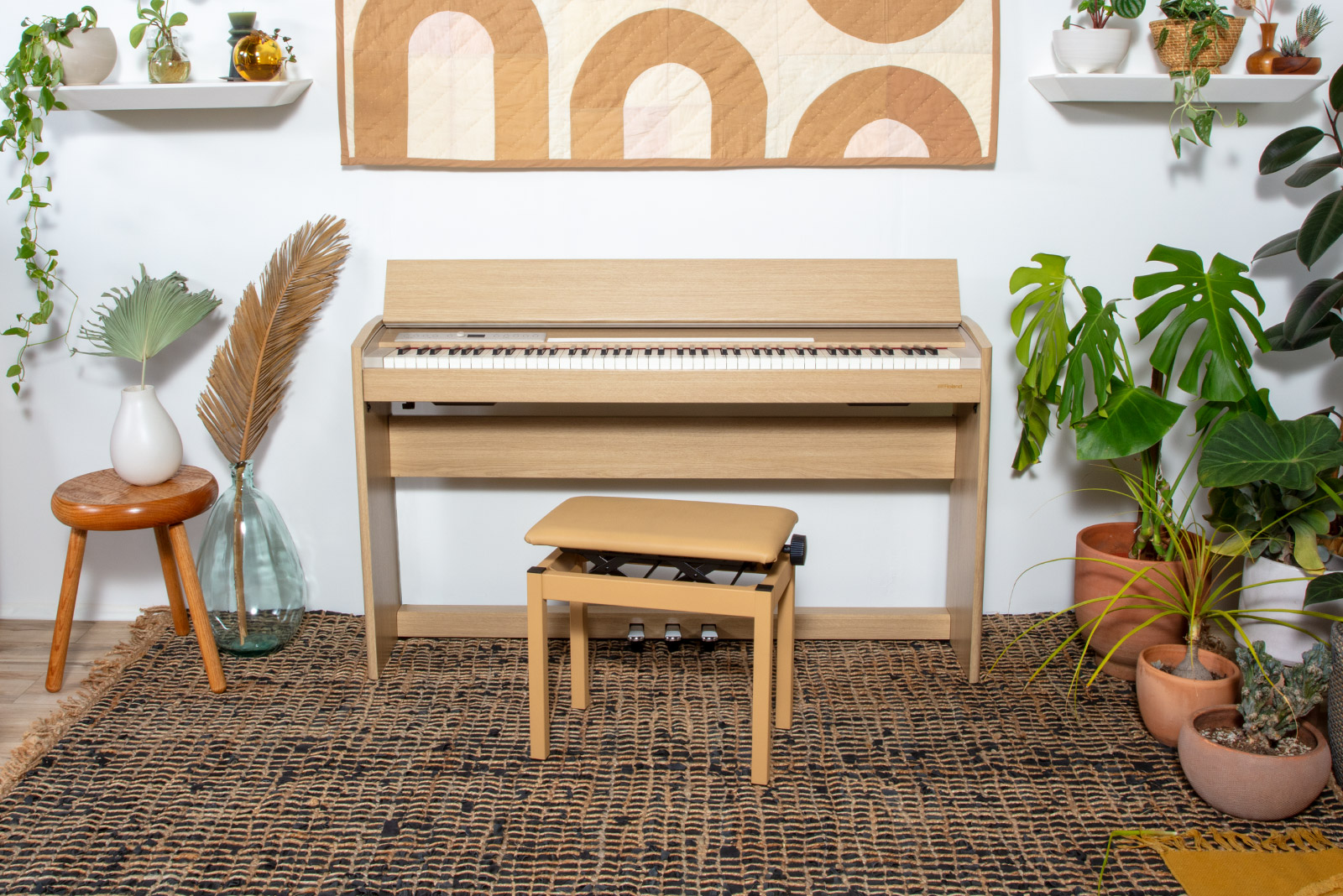
Finishing Touches
It’s tempting to place heavy frames and candles directly on your piano for a romantic look. However, these accessories can ruin the finish or build of your instrument. Instead, decorate your piano with lightweight objects and focus your attention on the surrounding area.
Try a rug under the piano bench and pair it with a floor cushion or two for a cozy, bohemian approach. Tie it together with a beautiful tapestry on the wall behind the piano. Do you want your music station to look clean and modern? An inspiring piece of art that hangs right above the piano and an elegant floor lamp on the side might be all you need. Indoor plants also make great embellishments. You can place a few on wall-mounted shelves and put a tall fiddle leaf fig tree next to the piano.
"Try a rug under the piano bench and pair it with a floor cushion or two for a cozy, bohemian approach. Tie it together with a beautiful tapestry on the wall behind the piano."
Plan Ahead
Perhaps the creative wheels are already turning in your mind. But all interior designers plan—and so should you. Before going on a shopping spree, decide on a theme and limit the number of decorative items to avoid overcrowding your space. Remember: the ultimate goal is to create an environment you feel comfortable not only playing but also living in.

